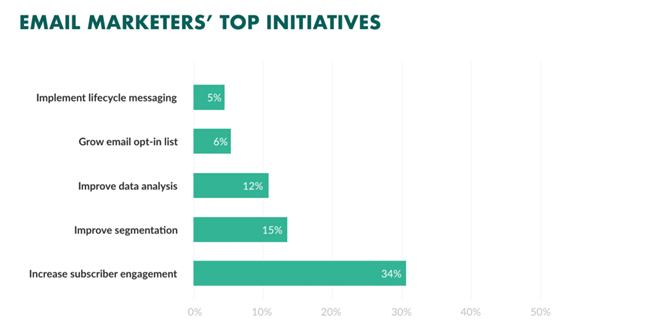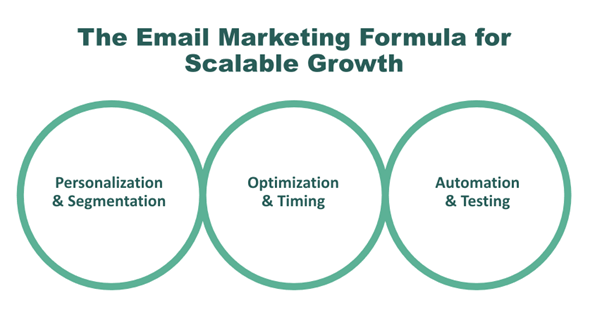Are you ready to boost your business and connect with your audience like never before? Email marketing is one of the most powerful tools at your fingertips.
But to get real results, you need the right strategies. You’ll discover the best email marketing strategies that can help you grow your list, increase engagement, and turn readers into loyal customers. Keep reading, because mastering these simple yet effective tactics could change the way you reach your audience forever.
.png)
Credit: mediusware.com
Crafting Compelling Subject Lines
Subject lines are the first thing your readers see. They decide if your email gets opened or ignored. Crafting strong subject lines can boost your email marketing success. Clear, catchy lines grab attention quickly. They set the tone for your message.
Short and direct subject lines work best. Avoid long, confusing phrases. Make your subject line easy to read on any device. It should spark interest and invite clicks. Try different ideas to find what your audience likes.
Using Personalization Techniques
Personalized subject lines feel more relevant to readers. Use the recipient’s name or location. This small touch makes emails feel special. Personalized lines show you know your audience. It builds trust and increases open rates.
Include personal details carefully. Avoid making it too long or complicated. Keep it natural and friendly. Test different personalization styles to see what works best.
Creating Urgency And Curiosity
Urgency encourages readers to act quickly. Words like “today,” “limited,” or “ending soon” create a sense of time. Curiosity makes people want to learn more. Use questions or hints without giving everything away.
Balance urgency with honesty. Overusing urgency can feel pushy. Curiosity should lead to valuable content. Both tactics can increase email opens when used right.
Testing And Optimizing Subject Lines
Test different subject lines to find the best fit. Use A/B testing to compare two versions. Check which one gets more opens and clicks. Data helps improve your future emails.
Change one element at a time. Test words, length, or personalization. Keep track of results and learn from them. Consistent testing leads to better subject lines over time.

Credit: www.accuranker.com
Segmenting Your Email List
Segmenting your email list improves how you communicate with subscribers. It helps send the right message to the right people. This increases chances they will open and act on your emails. Segmentation makes your campaigns more personal and effective.
Divide your list based on specific traits or actions. Tailor your content to match each group’s needs. This approach leads to higher engagement and better results.
Demographic Segmentation
Demographic segmentation divides your list by age, gender, location, or job. It helps create messages that fit each group’s lifestyle and preferences. For example, you can send different offers to young adults versus seniors. This makes emails feel more relevant and useful.
Behavior-based Segmentation
Behavior-based segmentation looks at how subscribers interact with your emails and website. Track clicks, opens, and browsing habits. Send follow-ups based on their interests and actions. This shows you understand what they want and increases trust.
Using Purchase History For Targeting
Purchase history reveals what customers bought before. Use this data to suggest related products or upgrades. This approach boosts repeat sales and keeps customers engaged. It also shows customers you remember their preferences.
Designing Engaging Email Content
Designing engaging email content is vital for effective email marketing. It helps catch readers’ attention and keeps them interested. Good design makes your message clear and easy to follow. It increases the chance that readers will take action.
Balancing Text And Visuals
Use a mix of text and images for better engagement. Too much text can overwhelm readers. Too many images can slow loading times. Keep text concise and informative. Use images to support your message. Make sure visuals are high quality and relevant.
Incorporating Clear Calls To Action
Calls to action guide readers on what to do next. Use simple, direct phrases like “Buy Now” or “Learn More.” Place CTAs where they are easy to find. Use buttons or links that stand out visually. Limit the number of CTAs to avoid confusion.
Mobile-friendly Email Design
Many people read emails on phones. Design emails to look good on small screens. Use large fonts and clear buttons. Avoid small links that are hard to tap. Test emails on different devices before sending. A mobile-friendly design improves user experience and response rates.

Credit: www.superoffice.com
Automating Email Campaigns
Automating email campaigns saves time and improves customer engagement. It lets you send timely messages without manual work. Automation helps deliver the right message to the right person at the right time. This makes emails more relevant and boosts results.
Welcome And Onboarding Sequences
Welcome emails greet new subscribers warmly. Onboarding sequences guide users through your product or service. These automated emails build trust and explain benefits clearly. They help users feel connected and informed from the start.
Abandoned Cart Reminders
Many shoppers leave items in their carts without buying. Automated reminders nudge them to complete the purchase. These emails often include product images and a clear call to action. This strategy recovers lost sales and increases revenue.
Re-engagement Campaigns
Some subscribers become inactive over time. Re-engagement emails invite them back with special offers or updates. Automation targets only those who stopped opening emails. It helps maintain a healthy and engaged subscriber list.
Analyzing Campaign Performance
Analyzing campaign performance helps you understand how well your email marketing works. It shows what parts attract readers and which need change. Good analysis leads to better results and more clicks.
Tracking key data points helps improve future emails. Focus on numbers that show engagement and actions from your audience.
Tracking Open And Click Rates
Open rates tell how many people see your email. They show if your subject line grabs attention. Click rates measure how many people tap links inside your email. High click rates mean readers find content interesting.
Track these rates to spot trends. Low rates suggest testing new subject lines or calls to action.
Monitoring Conversion Metrics
Conversion metrics track actions after clicking links. These actions include purchases, sign-ups, or downloads. Measuring conversions shows if your email leads to desired results.
Watch conversion rates closely. They reveal which emails bring real value to your business.
A/b Testing For Continuous Improvement
A/B testing compares two versions of an email. Change one element like subject line or button color. Send both versions to small groups. See which performs better.
Use test results to improve emails step by step. Small changes can increase engagement and conversions over time.
Ensuring Deliverability And Compliance
Ensuring email deliverability and compliance is key to a successful email marketing campaign. Emails must reach the inbox, not the spam folder. Following rules protects your brand and builds trust with your audience. Staying compliant avoids legal troubles and penalties.
Maintaining A Clean Email List
Regularly remove inactive or invalid email addresses. This reduces bounce rates and improves sender reputation. Use double opt-in methods to confirm subscribers want your emails. Clean lists boost engagement and keep your emails out of spam folders.
Following Gdpr And Can-spam Rules
Obtain clear consent before sending emails. Provide an easy way to unsubscribe in every email. Include your business address and contact details. Respect privacy rights and avoid collecting unnecessary data. These rules protect recipients and keep your campaigns legal.
Avoiding Spam Triggers
Use clear, honest subject lines and email content. Avoid excessive punctuation, all caps, and spammy words. Limit images and use balanced text-to-image ratio. Test emails with spam-check tools before sending. Clean coding and proper authentication also help deliverability.
Frequently Asked Questions
What Are The Best Email Marketing Strategies For Beginners?
Start with building a quality email list and segmenting your audience. Personalize content and use clear call-to-actions. Test subject lines and optimize send times. Analyze metrics regularly to improve campaigns effectively.
How Can I Increase Email Open Rates Effectively?
Craft compelling, personalized subject lines and avoid spammy words. Send emails at optimal times and keep preview text engaging. Maintain a clean, targeted list to boost open rates significantly.
Why Is Email Segmentation Important In Marketing?
Segmentation helps deliver relevant content to specific audience groups. It increases engagement, improves conversion rates, and reduces unsubscribe rates. Tailored messages create better customer experiences.
How Often Should I Send Marketing Emails?
Send emails consistently but avoid overloading your subscribers. Typically, 1-4 emails per month work well. Monitor engagement and adjust frequency based on audience response.
Conclusion
Effective email marketing boosts customer engagement and builds trust. Use clear subject lines to catch attention quickly. Personalize messages to connect with readers. Segment your list to send relevant content. Test different approaches to find what works best. Track results to improve future campaigns.
Consistency matters; send emails regularly but don’t spam. Focus on value to keep subscribers interested. Small changes can lead to better open and click rates. Keep learning and adapting your strategies for success. Email marketing remains a strong tool to grow your business steadily.
